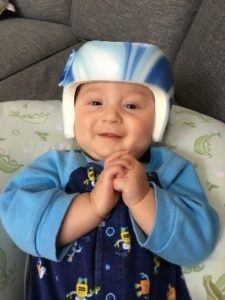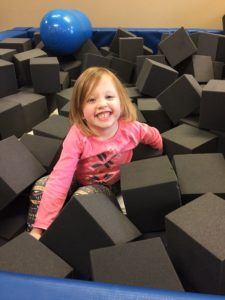Month: April 2019
What is torticollis?
You may have noticed that your baby may prefer to look towards one side, they have difficulty turning their head towards one side, they may keep their head tipped towards a side or maybe they have a flat spot on the back or side of the head. If so, they may have something called torticollis or “wryneck”. Torticollis is tightness of neck musculature that typically causes them to tilt to one side and look towards the other. It can happen before, during, or after birth and can affect their development. It primarily causes the muscles on one side of the body to become tight with the muscles on the opposite side of the body becoming stretched and weakened. This makes it harder to look from side to side, to use their legs and arms normally, and ultimately affect the way they learn to sit, crawl, and play.
Effect on Head Shape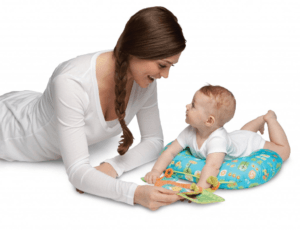
Sometimes prolonged positioning of the baby’s head in one direction cause a flat spot (this is called plagiocephaly). It can affect the shape of the rest of the baby’s head, with changes in the forehead (this is called bossing), changes in ear positioning, and facial asymmetries such as jaw recession. Some babies prefer to be on their backs but do not have a preference for turning their head towards one side, which could lead to the entire back side of the head is flattened (brachycephaly), making the head appear wide. Intervention by a physical therapist, education on positioning and supervised tummy time can help improve the shape of your baby’s head!
Head shape deformity, if not treated early, could lead to the need for a helmet to modify head shape. Helmets are expensive and have to be worn for 23 hours a day. Seek help early to avoid more invasive measures.
Long term effects of head shape not treated could lead to facial deformities. Asymmetry of the eyes could affect the ability of the eyes to work together as well since they will not be in alignment. Glasses would also be a challenge to fit if the eyes and/or ears were not aligned.
Another long term problem could be the ability of a baseball, softball, or football helmet to fit correctly, which can put the child at a higher risk for concussion.
Effect on Development
Tight neck muscles can have a significant effect on child development. 
An infant may have difficulty growing out of reflexes that will effect the baby’s ability to achieve skills. For example, a baby will not be able to feed himself if a reflex called the Asymmetrical Tonic Neck Reflex (ATNR) does not integrate. The baby’s ability to move the head to both sides allows this reflex to mature and go away. Tight neck muscles prevent equal movement to both sides allowing this reflex to remain and effecting the child’s ability to get their hand to their mouth.
Balanced strength on both sides of the body will be limited as the child will choose 1 side of the body over the other to use as the muscles are not tight there.
Tolerance of tummy time will be decreased as control of the head and neck will be effected by tight neck muscles. Strength of the neck, back and arms muscles will decreased if the child does not spend time on his/her belly.
Ability to cross midline or hold bottle in midline is an issue when neck muscles are tight. A child needs to cross midline to dress himself and to perform most skills.
Tight neck muscles may lead to jaw muscle imbalance which effects the seal on a nipple. Imbalances in the jaw can lead to pain in that joint.
Neglect of one side of the body is also seen when a child has Torticollis. The child whole visual field becomes the side of the body in which they see, the side where the tightness occurs, creating more imbalances and delays in motor skills.
Importance of Supervised Tummy Time
After the “Back to Sleep” program was implemented in the 1990’s, there was an increase in torticollis and head shape concerns. The program was successful and the safest place to place your child when asleep and/or unsupervised is on their backs. Many babies spend most of their awake and sleep time on their backs or in equipment such as a bouncer, a swing, a car seat, etc. With more and more time spent in these passive positions, pressure is being placed on one spot of their heads consistently, leading to a flat spot.
Encouraging the baby to look towards the other side from their preferred side will help take the pressure of their flat spot of their heads. One of the best ways to improve the shape of the head while also improving their strength is the use of tummy time while the child is supervised and awake. When a baby spends time in active floor play it encourages motor development, Tummy time especially allows them to build strength in their neck muscles. Supervised tummy time while awake is a very important part of your baby’s development! Eventually they learn how to bear weight through their forearms and extended arms, further building strength in their necks, backs, and arms. By doing so, there is less pressure on their heads and it enforces a more neutral or midline position.
How is this treated?
In many cases, traditional physical therapy can help your baby’s strength, posture, development and head shape. Treatment typically consists of is parent/caregiver education, stretching tight muscles, strengthening weak muscles, and monitoring/addressing developmental gross motor milestones (i.e rolling, crawling, and sitting). Although the physical therapist plays an important role, it is also crucial that the home exercise program be followed as well. This program typically consists of stretches, re-positioning techniques, and strengthening exercises all taught by the physical therapist and usually practiced during the session.
If your baby’s head shape does not respond to repositioning and addressing the torticollis, a cranial shaping helmet may be used to directly address the shape of your baby’s head. The use of the helmet is backed by research and has be proven to be the most effective in terms of returning the head shape towards a more normal appearance. The helmet is worn 23 hours of the day, and is changed periodically by the orthotist as they baby’s head grows.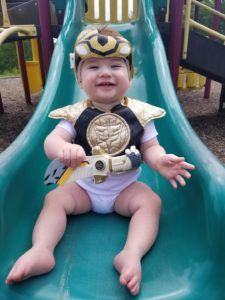
If you have further questions about torticollis, the role of physical therapy, or the use of a helmet, contact an ABC Pediatric Therapy physical therapist for more information and to schedule an appointment. Visit our website at www.abcpediatrictherapy.com to find the nearest location near you.
Read MoreThere are many reasons why a child may benefit from orthotic intervention at all different ages, with and without a medical diagnosis. The use of orthotics can vary from child to child, however, the main goal is to provide stability while promoting functional ability.
Orthotics can range from shoe inserts to knee high braces and more. They can be used to assist with flat feet, toe walking, weakness, poor balance, frequent tripping, leg length discrepancies, and etc. Orthotics are made to improve a child’s walking pattern to as normal for THEM as possible to facilitate age appropriate child development.
As a physical therapist, I hear more often than not that “my child’s doctor said they would grow out of it.” This may be the case for some children, but not all children are the same. Our posture and the way we walk begin in the womb and continue to develop through infancy and beyond. The way we walk is affected by our strength, flexibility, endurance, sensory processing, balance, and more. We cannot assume that because one child grew out of toe walking, all children will. There are many factors to consider and assess with each and every individual child.
The photos below are of a child whose mom had concerns about her foot position as soon as she began walking. Her primary care provider told her that she would grow out of it. She is now 9 years old and has significant ankle pain with running, jumping and long distant walking. With the use of custom orthotics and physical therapy services her pain has improved significantly. She will occasionally still have pain with higher impact sports, however, it is less frequent and she is now able to enjoy playing with her friends.
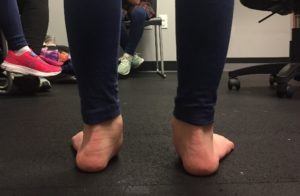
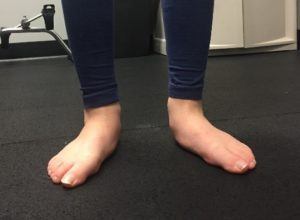
A child’s medial column of their foot, which means the middle of their foot (arch), does not fully develop until the age of 7-8 years old. This means that the forces we place upon our feet during this time frame will significantly impact the structure of them. If a child is compensating in the way they are standing, walking, running it could lead to foot abnormalities when they get older which could potentially lead to pain and/or decreased function in their day to day lives.
It is also important to note that because orthotics promote function, if a child is having difficulty learning to walk, jump, run, hop, or any gross motor activity that orthotics could be beneficial in helping facilitate those motor milestones.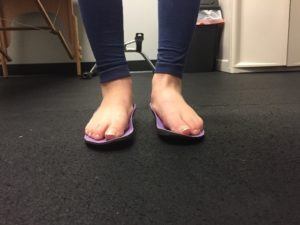
If you have concerns about your child’s foot position, posture, walking, and/gross motor development I highly recommend consulting with your pediatrician, as well as, a physical therapist to make sure that there are not underlying deficits and to determine if 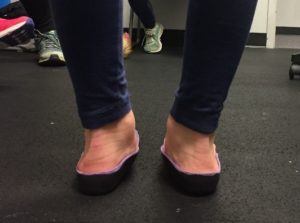 your child would benefit from orthotic intervention. There is not one specific type of orthotic for any given diagnosis or deficit. There are so many options of orthotics available and a good physical therapist will help you determine what is best for your child.
your child would benefit from orthotic intervention. There is not one specific type of orthotic for any given diagnosis or deficit. There are so many options of orthotics available and a good physical therapist will help you determine what is best for your child.
For more information on child development and therapy services visit: https://www.abcpediatrictherapy.com/
Written by: Sandra Koopmans PT, DPT
Read More Skip to content
Skip to content
